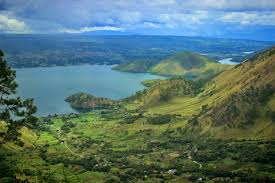Sumatra is a land of unparalleled natural beauty, and exploring Sumatra’s tropical forests reveals a world teeming with life. Towering trees, winding rivers, and dense greenery create habitats for countless species of flora and fauna. For adventurers and nature enthusiasts, these forests offer the perfect combination of wildlife encounters, scenic trekking routes, and an immersive experience in one of the planet’s most biodiverse regions.
Flora: A Symphony of Green
The tropical forests of Sumatra are known for their remarkable biodiversity. Towering dipterocarp trees dominate the canopy, while a variety of palms, ferns, and orchids carpet the forest floor. These forests are not just visually stunning but play a critical role in maintaining ecological balance by supporting pollinators, storing carbon, and preventing soil erosion.
Among the most iconic plant species is the Rafflesia arnoldii, famously known as the “corpse flower,” which produces the largest single flower in the world. Its unique scent attracts pollinators like carrion flies, making it a fascinating study for botanists and ecotourists. Additionally, tropical fruits like durian, rambutan, and mangosteen thrive in Sumatra’s humid environment, providing both sustenance for wildlife and inspiration for local culinary traditions.
Read Also: Transformasi Artis Musik Transfo
Fauna: A Haven for Endangered Species
Sumatra is also a sanctuary for some of the world’s most endangered species. The Sumatran tiger, Sumatran orangutan, and Sumatran rhinoceros are flagship species that attract conservationists from around the globe. Dense forest cover offers these animals refuge from human encroachment, although illegal logging and habitat fragmentation remain serious threats.
Birdwatchers will be enthralled by species such as the Sumatran hornbill and Javan hawk-eagle, which color the skies and fill the forest with their calls. Meanwhile, smaller mammals like civets, gibbons, and pangolins contribute to the intricate web of life, each playing a role in seed dispersal and maintaining the health of the forest. Conservation programs, eco-tourism initiatives, and wildlife sanctuaries are helping to ensure these species survive for future generations.
Read Also: Angel Lelga Pamer Hijrah di Media Sosial 2025
Trekking Routes: Paths Through Nature
For adventurers, trekking through Sumatra’s forests offers both challenge and reward. Popular routes like the Kerinci Seblat National Park trails let visitors encounter wildlife in their natural habitat. Hikers can also explore volcanic landscapes and misty mountain slopes. Trails range from gentle walks suitable for families to multi-day hikes for experienced trekkers.
The Bukit Lawang orangutan sanctuary trek is especially famous. Visitors can observe semi-wild orangutans in the dense jungle. In the Lake Toba region, forested trails provide breathtaking views of the volcanic lake, combining natural beauty with adventure. Hiring a guide is recommended for safety and a richer experience. Guides also share insights about the local flora, fauna, and cultural heritage.
Read Also: Prilly Latuconsina Ganti Genre 2025 dari Horor ke Komedi
Conservation Efforts: Protecting a Biodiversity Hotspot
Conservation efforts in Sumatra are crucial, given the pressures of deforestation and illegal wildlife trade. Organizations collaborate with local communities to implement sustainable forestry practices, anti-poaching patrols, and environmental education programs. These efforts aim not only to protect the wildlife but also to ensure that eco-tourism can continue in a way that benefits both nature and people.
National parks, such as Gunung Leuser and Bukit Barisan Selatan, serve as vital strongholds for endangered species, offering safe habitats while attracting researchers and ecotourists. By choosing responsible tourism operators and participating in conservation activities, visitors can directly contribute to the preservation of Sumatra’s extraordinary forests.
The Cultural Connection: Forests and Local Communities
The tropical forests of Sumatra are not just ecological treasures; they are integral to the lives and cultures of indigenous communities. Villages nestled within or near the forests rely on its resources for food, medicine, and materials, maintaining traditional practices that have been passed down through generations. Storytelling, forest rituals, and community-led eco-tourism initiatives help keep these cultures alive while promoting environmental stewardship.
Visitors have the unique chance to witness how local knowledge complements modern conservation efforts. Guided tours often include cultural experiences, such as learning to identify medicinal plants or participating in traditional crafts, deepening the connection between people and the forest.
Planning Your Trip: Tips for an Unforgettable Adventure
To make the most of exploring Sumatra’s tropical forests, preparation is essential. The best time to visit is during the dry season, from May to September, which offers safer trekking conditions and better chances to spot wildlife. Essential gear includes sturdy hiking boots, insect repellent, rain protection, and lightweight clothing suitable for the humid forest environment.
Hiring certified local guides enhances safety, offers deeper insight into the ecosystems, and supports local livelihoods. Travelers are encouraged to respect wildlife by keeping a safe distance, avoiding litter, and adhering to park regulations. By planning thoughtfully, adventurers can enjoy a rich, immersive experience that respects both nature and culture.
Exploring Sumatra’s tropical forests is a journey that leaves a lasting impression. From the vibrant flora to the endangered fauna and the diverse trekking routes, every step reveals the magic and complexity of one of the world’s most remarkable ecosystems. It’s a destination where adventure, education, and conservation converge, offering travelers an unforgettable connection to the natural world.
